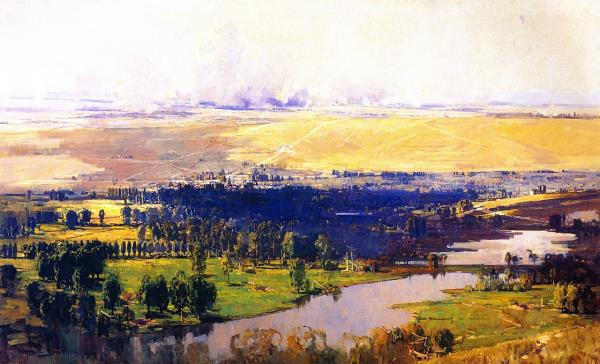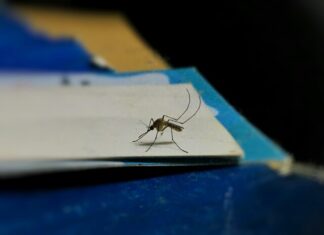
By NOEL MURPHY
IMAGES of war often focus on the brutal, the horrifying and shocking carnage of ripped and shattered humanity — mangled bodies, surreal theatres of conflict with an air of industrial ruin, anguish.
The Great War of 1914-18 has been typified by mud and trenches, black and white tableaux of other-worldly machines, biplanes and tanks, odd uniforms, razed villages – all accurate and true enough but often a stark contrast to the nearby surroundings.
The great Geelong region-born artist Arthur Streeton saw the war through different eyes.
“War is a drab and horrifying business at the best,” a reviewer wrote back in 1920 when his works were exhibited in Melbourne.
“Mr Streeton’s canvasses are a reminder that there were blue skies and sunshine even at the front. He avoids the more ugly horrors of war, giving instead fascinating impressions of the colour and stirring life of the battle line.
“Generally he makes little use of figures in his studies, and yet his fine landscape views suggest the movement and tumult of war to a remarkable degree.”
The reviewer cited Streeton’s The Somme Valley near Corbie, capturing an Australian attack on 8 August 1918.
“Here is a wide stretch of peaceful countryside, with trees and a winding river, flecked with sunlight and shadow, in the foreground.
“Away in the background, however, the plains are hidden by rolling smoke clouds, shell bursts and fires, and an irresistible impression is conveyed of movement, hidden under the pall of smoke.”
Streeton himself described “true pictures” of battlefields as “very quiet looking things, there’s nothing much to be seen and everybody and everything is hidden and camouflaged”.
The mayhem beneath the smoke, of course, was quite another thing altogether. But Streeton’s perspective of war at a safe distance places a somewhat chilling perspective on the otherwise ordinariness of its surroundings.
Arthur Streeton, one of Australia’s best-known landscape artists and a member of the famous Heidelberg School, was a latecomer to the front. He was living in London when the war broke out and in his late forties.
Too old for military service, he took up with the Royal Army Medical Corps as an orderly in Wandsworth along with other Australian artists including Tom Roberts.
He pushed for an Australian war art scheme and was appointed an official war artist in May 1918.
Streeton’s war art – watercolours, drawings and paintings, many from The Somme — depict the AIF headquarters at St Gratien, Glisy and Heilly, dressing stations at Villers-Bretonneaux, destruction around Peronne.
He produced more than 180 works in six months on a wage of two pounds a day.
Of his Corbie masterpiece, he explained:
“I went in ambulance to an old town due north … and behind a dressing station and up a steep hill where I had a fine view of the valley with a flat covered with lovely trees and the Somme winding through and the towers of the old church of Corbie and other villages and Villers-Bretonneux on the distant skyline.
“A grand spread and the area of battle, shell bursts and shrapnel occasionally spotting a fine sky. But everything here must be done rapidly or left alone.
“The Commonwealth Government want the work to be descriptive – I don’t know how my things will look on my return but I’m making many pencil studies for larger works in oil and observing all I can.”
Streeton was born at Mount Duneed in 1867, the fourth of five children to Charles and Mary Streeton. He moved to Melbourne in 1874.
He was the first Australian painter to be honoured with retrospective exhibition in his lifetime and just the second to be knighted. He is linked closely to Frederick McCubbin, Tom Roberts and Charles Condor, responsible for developing an Australian impressionist technique of painting.






